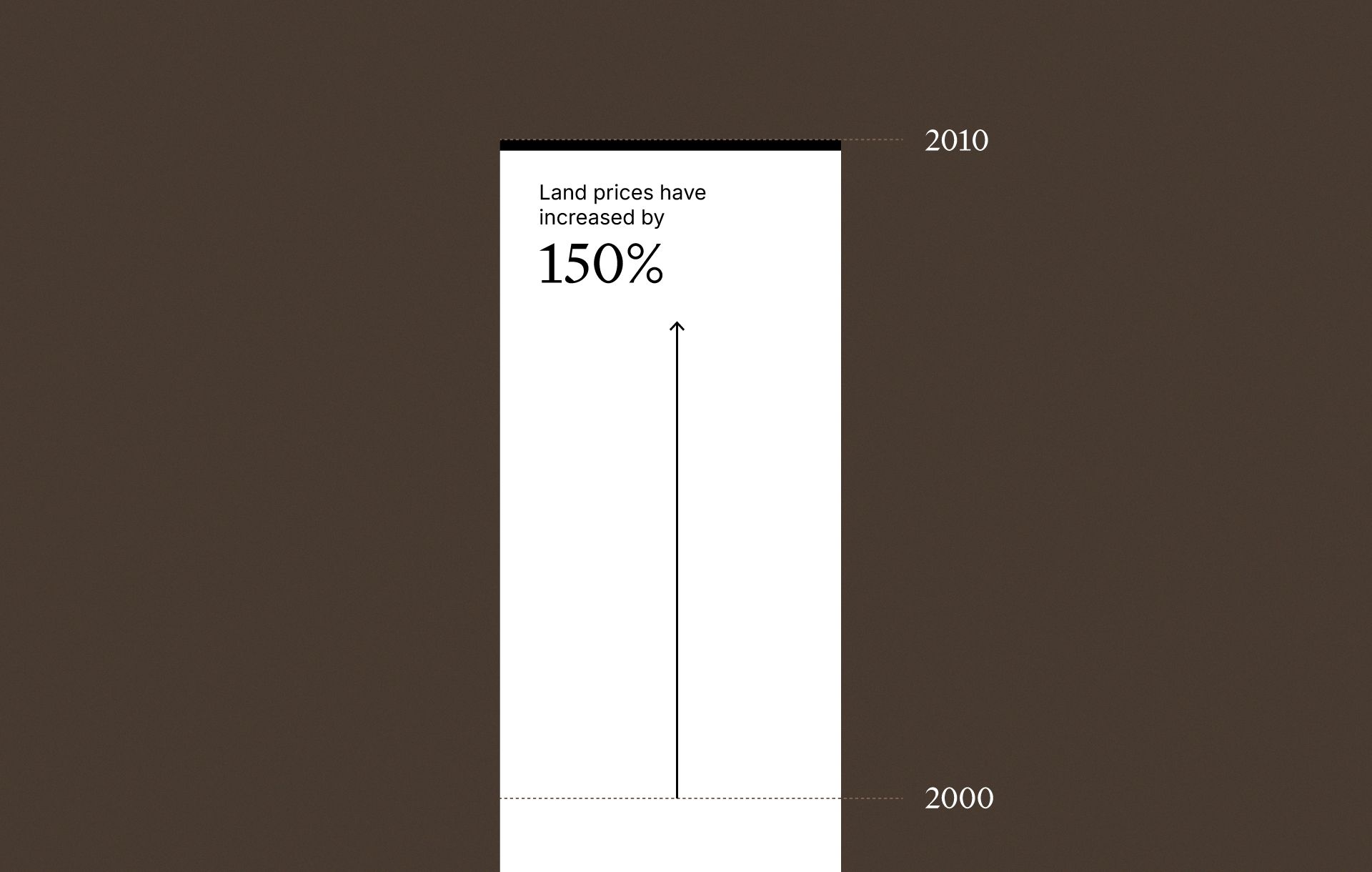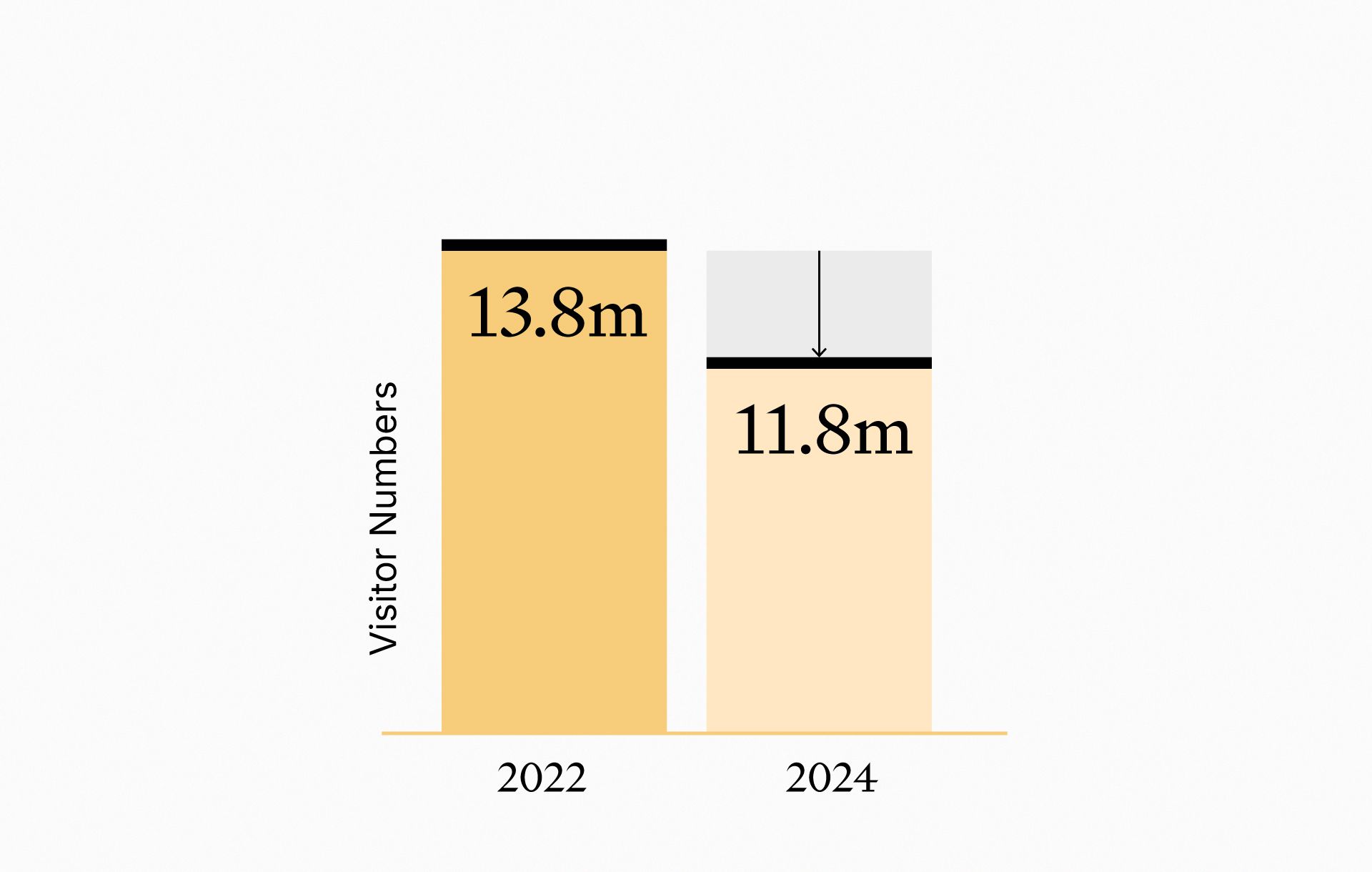
Insight Articles — Mar 25, 2025
From Tangerine Groves to Property Haven
5 mins read
Share this article
Netflix’s “When Life Gives You a Tangerine” takes viewers on an emotional ride through Jeju. But how did Jeju evolve into what it is today? Let’s explore.
Chapter 1: The Quiet Years (1955–2000)
In 1955, Jeju was still reeling from the Korean War. Its economy leaned on fishing, farming, and its famous tangerines. Homes were simple—stone-walled cottages surrounded by farmland—and the property was a local affair, with little value beyond the island’s shores. Then, the first ripples of change appeared. By the 1970s, Jeju’s natural beauty drew over 1 million domestic tourists annually, sparking demand for modest vacation homes and guesthouses. The opening of Jeju International Airport in 1968 made the island more accessible from Seoul, laying the groundwork for growth. Still, foreign investors barely noticed, and property prices stayed low, tied to local needs. Jeju was a tangerine on the tree—ripe with potential, but not yet picked.

Chapter 2: The Boom Begins (2000–2010)
As South Korea opened to the world in the early 2000s, Jeju began to shine. In 2006, it became a special self-governing province, gaining the autonomy to chart its own course. Tourism surged—by 2005, annual visitors hit 5 million, fueling a construction boom of vacation homes and small hotels.
The world started to take notice. In 2007, Jeju’s volcanic landscapes earned it a UNESCO World Heritage designation, boosting its global allure. Property values responded: between 2000 and 2010, land prices in prime areas like Seogwipo soared by 150%, jumping from humble agrarian valuations to numbers that hinted at a bigger future. Jeju was no longer just a local treasure—it was ripening for the global market.

Chapter 3: When Foreign Investors Took Over (2010–Present)
The real explosion came in 2010 with the launch of the Investment Immigration System. This bold policy offered residency to foreigners (especially chinese) who invested at least 500 million KRW (about $450,000) in Jeju property.
- Foreign Ownership Skyrockets: Between 2009 and 2014, foreign-owned land ballooned from 19,702m2 to 5,922,327m2. By 2015, foreigners owned over 1% of Jeju’s total land area.
- Price Surge: In Jeju City, residential land prices leaped from 200,000 KRW per m2 in 2010 to 500,000 KRW by 2015—a 150% jump. Across the island, property became a hot commodity.
Mega-projects defined this era. The Jeju Shinhwa World, a $1.8 billion luxury resort, opened its doors, boasting casinos, hotels, and villas that catered to the world’s elite. But growth came with a cost—overdevelopment strained Jeju’s ecosystems, and locals feared their island’s soul was slipping away. The boom was undeniable, but it demanded balance.

Podo hotel by Pinx Resort
Chapter 4: The Sustainability Pivot
Jeju’s leaders and investors recognized the stakes: unchecked growth could spoil the island’s magic. So, they pivoted toward sustainability and collaboration, blending innovation with tradition.
- Eco-Friendly Moves: In 2012, Jeju launched its Energy Vision 2030, aiming to become carbon-free. Projects like Solar Valley emerged, integrating solar-powered homes and businesses into the landscape, proving green could be profitable.
- Cultural Blend: Developments like the Stone Park Residences married modern luxury with Jeju’s heritage—stone walls and thatched roofs reimagined for today’s buyers. These homes sold out in weeks, showing that tradition had a market.
- Local Wins: The Jeju Olle Trail, a network of hiking paths funded by foreign capital and guided by local expertise, became a tourist magnet, creating jobs and boosting small businesses.
- Jeju’s GDP per capita grew from 10 million KRW in 2000 to 25 million KRW by 2020.
- In 2019, tourism revenue hit 6 trillion KRW, driven by 15 million visitors—nearly 25 times the island’s population of 670,000.
Jeju’s air stayed pristine, and its UNESCO status was renewed in 2018, a nod to its preservation efforts amid growth.
Chapter 5: The New Challenge—Can Jeju Keep Winning?
Jeju’s transformation into a model of sustainable development is unfolding alongside efforts to revive its tourism industry. While property prices surged 10% in 2023, guided policies—like caps on large-scale projects and the Jeju Smart City initiative—ensure balanced growth. At the same time, Jeju faces a declining domestic tourist market, with visitor numbers dropping from 13.8 million in 2022 to 11.86 million in 2024. Factors like flight reductions, poor service, and safety concerns have shifted Korean travelers toward neighboring countries. To counter this, Jeju is leveraging its global appeal, integrating AI-driven urban planning and cultural restoration efforts like the Jeju Heritage Fund to attract both investors and travelers.

What Developers Can Learn from Jeju
- Leverage Natural and Cultural Assets to Drive Demand: Jeju’s tourism surged from 1 million in the 1970s to 15 million in 2019, proving natural and cultural assets drive demand. Developers should amplify a location’s unique strengths
- Partner with Policymakers to Unlock Investment Potential: Government incentives, like Jeju’s 2010 Investment Immigration System, can rapidly boost real estate growth. Aligning with policies—tax breaks, residency programs, or zoning relaxations—helps attract foreign investors and maximize ROI.
- Tap into Globalization Early for Exponential Growth: Jeju’s UNESCO status (2007) and airport access (1968) drove a 150% price surge (2000–2010), attracting global buyers. Developers should target emerging demographics and market internationally through digital platforms, partnerships, or expos for maximum returns.
- Prioritize Sustainability to Future-Proof Investments: Jeju’s Energy Vision 2030 and Solar Valley highlight the need for sustainable growth, driving a 10% price rise in 2023. Developers should adopt green technologies and certifications like LEED to attract eco-conscious buyers, meet regulations, and protect long-term value.
- Build Synergies with Local Communities for Resilience: Jeju’s Olle Trail and Heritage Fund boosted tourism revenue to 6 trillion KRW by 2019, proving local collaboration drives stability and growth. Developers should engage communities through jobs, cultural projects, or profit-sharing to reduce risks and build long-term support.
What’s Next in Real Estate? Stay Ahead.
Unlock the secrets of smart property growth—save this story and share it with your network to inspire the next big move in real estate.
Follow us on social media: Unithree Residency
Share this article
Related insight


